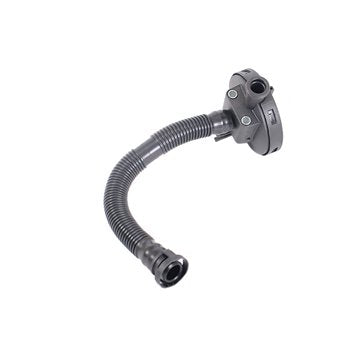Find the best clp engine for your specific needs.
Find the best clp engine for your specific needs.
Blog Article
Just How a Clp Engine Can Enhance Effectiveness in Different Industries
The arrival of CLP engines marks a substantial change in functional performance across various fields, driven by their capability to maximize gas consumption and decrease downtime. As companies increasingly prioritize sustainability alongside performance, the role of CLP engines becomes also much more essential.
Overview of CLP Engines
CLP engines, or Constant Fluid Propellant engines, stand for a significant advancement in propulsion modern technology, particularly for room applications. These engines use a constant feed system that allows for the sustained expulsion of propellant, bring about enhanced performance and efficiency contrasted to typical strong or hybrid propulsion systems. By maintaining a consistent circulation of liquid propellant, CLP engines can accomplish much more accurate thrust control, which is critical for navigating spacecraft in different goal circumstances.
The layout of CLP engines incorporates advanced materials and innovative gas monitoring systems. clp engine. This causes minimized weight and boosted dependability, important elements for long-duration room goals. In addition, the continuous operation decreases the danger of burning instability, a typical difficulty in standard rocket engines.

Advantages in Manufacturing
The production of Constant Liquid Propellant (CLP) engines presents numerous notable advantages that boost both performance and cost-effectiveness. One of the primary advantages is the structured manufacturing process, which decreases the intricacy related to traditional propulsion systems. By making use of fluid propellant, suppliers can achieve better precision in engine performance, resulting in enhanced energy output and lowered waste.
Furthermore, CLP engines promote a greater level of modularity, permitting for easier combination into different manufacturing lines. This versatility can considerably lower lead times and boost total operational adaptability. The use of CLP modern technology additionally often tends to decrease the requirement for extensive upkeep as a result of fewer relocating parts, which equates right into reduced downtime and operational expenses.

Applications in Logistics
Leveraging Continuous Fluid Propellant (CLP) engines in logistics provides substantial benefits in operational efficiency and dependability. These engines supply a robust service for different transportation demands, enabling the seamless movement of products across large ranges. The intrinsic design of CLP engines permits consistent power outcome, which equates right into smoother and More about the author much more predictable transport routines.
Among the vital applications of CLP engines in logistics is in sturdy freight transport, where they can drive both ground and airborne automobiles. Their capability to maintain high efficiency under varying lots conditions guarantees that shipment timelines are fulfilled, therefore boosting customer contentment. In addition, CLP engines can be integrated right into automated logistics systems, facilitating real-time monitoring and optimizing course preparation.
Furthermore, the longevity of CLP engines reduces upkeep downtime, enabling logistics business to optimize their operational capacities. This is specifically beneficial in warehousing procedures, where efficiency in taking care of and delivering goods is crucial. As logistics proceeds to advance, the assimilation of CLP engines stands for a forward-thinking method that not only improves efficiency however also sustains the market's growing demands for integrity and rate.
Influence On Power Performance
Just How do Constant Fluid Propellant (CLP) engines improve power performance in transport? CLP engines make use of a consistent circulation of liquid gas, optimizing combustion procedures and maintaining a steady thrust result. This layout decreases energy losses linked with typical combustion engines, where fuel distribution can vary and result in inadequacies.
The continual procedure of find out CLP engines permits an extra effective thermal cycle, causing higher details impulse contrasted to traditional engines. clp engine. This equates to decreased fuel consumption for the very same quantity of work done, significantly decreasing operational prices throughout various transportation industries, including aeronautics and maritime sectors
Additionally, the capability of CLP engines to preserve optimal performance under differing lots conditions lowers the demand for frequent acceleration and slowdown, better improving gas efficiency. Improved energy efficiency not just adds to cost savings however likewise causes decrease greenhouse gas emissions, aligning with international sustainability goals.
Future Trends and Innovations
Arising developments in Continuous Fluid Propellant (CLP) engine modern technology promise to transform the landscape of transport efficiency and sustainability. As sectors pivot toward greener choices, CLP engines stand at the center, incorporating cutting-edge materials and design approaches that improve efficiency while decreasing environmental impact.
One of the most appealing patterns is the fostering of crossbreed systems that incorporate CLP engines with eco-friendly power sources. This synergy can maximize gas consumption and minimize discharges, straightening with global sustainability goals. Additionally, advancements in computational liquid dynamics (CFD) are promoting the design of more aerodynamically effective engines, bring about lowered drag and boosted gas performance.
In addition, the growth of smart surveillance systems is set to boost functional efficiencies. These systems utilize information analytics and IoT technology to optimize engine performance in real-time, ensuring that the engines operate within their most effective criteria.
As research proceeds to discover different propellant solutions-- such as biofuels and synthetic gas-- the future of CLP engines looks encouraging. By utilizing these technologies, industries can not just improve their effectiveness however likewise add considerably to a cleaner, much more lasting future in transport.
Conclusion
Finally, CLP additional resources engines represent a substantial development in performance across multiple sectors. Their capacity to maximize fuel consumption and lower functional costs, combined with a continuous feed system, improves power outcome and operational dependability. The assimilation of advanced materials and less moving components decreases maintenance demands, while placement with sustainability goals settings CLP engines as a critical technology for the future. Proceeded advancement in this field guarantees further enhancements in performance and ecological efficiency.
Report this page